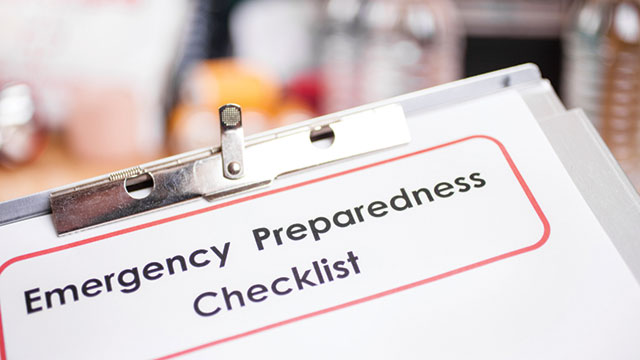Emergency Preparedness in the Laboratory
If a disaster were to strike your facility, would you and your staff be ready?
Register for free to listen to this article
Listen with Speechify
0:00
5:00

With the first week in May being Emergency Preparedness Week every year here in Canada, where Lab Manager is headquartered, and our June issue focusing on laboratory safety, we thought it would be a good time to talk about emergency preparedness in the lab. If a disaster were to strike your facility, would you and your staff be ready?
Here are some key considerations when developing an emergency plan for your lab:
- Create responses to a variety of incidents. James A. Kaufman, in the safety tip in our September 2015 issue, suggests having employees come up with an “emergency of the month” and then assigning another employee or pair of employees to draft a model response to that emergency, whether it’s a flood, fire, tornado, etc. This activity helps identify where the lab could be vulnerable in the event of an emergency.
- Conduct drills. In the safety tip mentioned earlier, Kaufman also stresses the importance of having employees regularly practice dealing with a mock emergency, then discussing areas for improvements afterward. Did people panic? Was the lab evacuated too slowly?
- Have the proper equipment in place. Power failures, for example, can be catastrophic for the lab. What key equipment and/or samples could you absolutely not afford to lose? Ensure backup power supplies are in place and regularly maintained for this equipment. As always, basic safety equipment, such as first aid kits, personal protective equipment, safety showers, and eyewash stations should always be on hand and well maintained. Survival kits are also appropriate to have on hand in case employees are trapped in the lab for an extended period of time, due to a natural disaster, etc.
- Having the proper equipment is no help if employees don’t know how to use it. Managers should ensure that all employees know how and when to use the safety equipment they’ll need in an emergency. Regular safety meetings are the perfect opportunity to check if employees are up to date with such training.
- Have a clear leadership structure and set of priorities. The Emergency Planning section of Prudent Practices in the Laboratory: Handling and Management of Chemical Hazards: Updated Version, stresses that “having a clear succession of leadership and priorities ahead of time can help provide clarity” during the chaos of an emergency. Selecting someone to be in charge in the event of an emergency, plus one or two backups, is critical. Setting the lab’s priorities (Ex. Priority 1: Protect human life, Priority 2: Protect research animals, etc.) in advance is also important.
The above points are not meant to be an exhaustive plan for dealing with an emergency, especially considering the uniqueness of each lab. However they can help you and your staff start thinking about what your lab would do in an emergency, where weaknesses exist, and some key factors you may want to include in your emergency plan.
